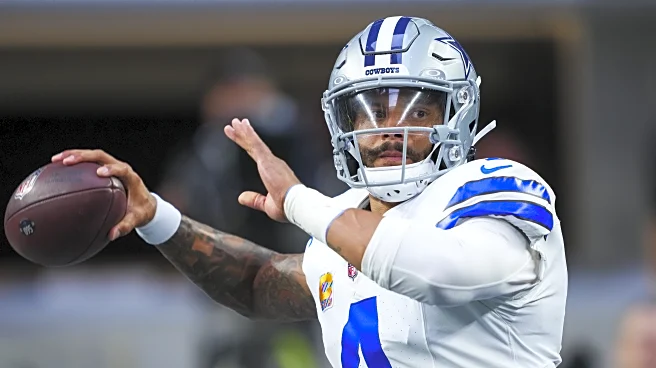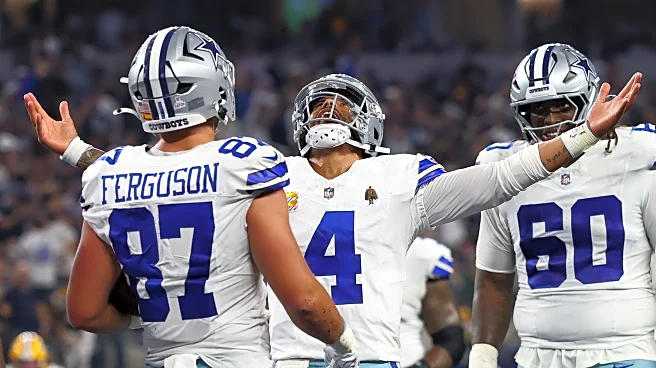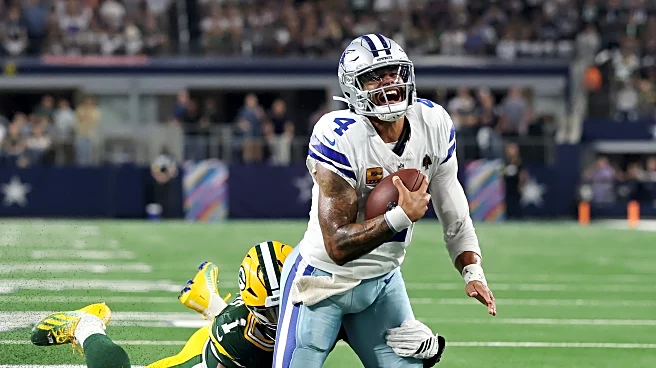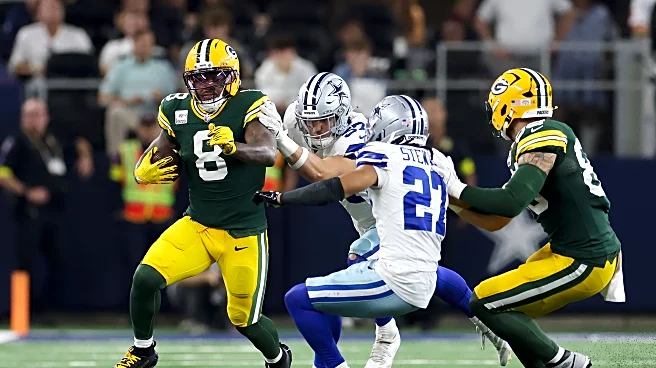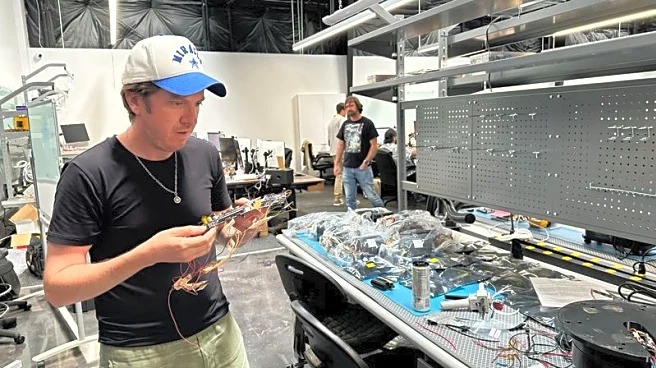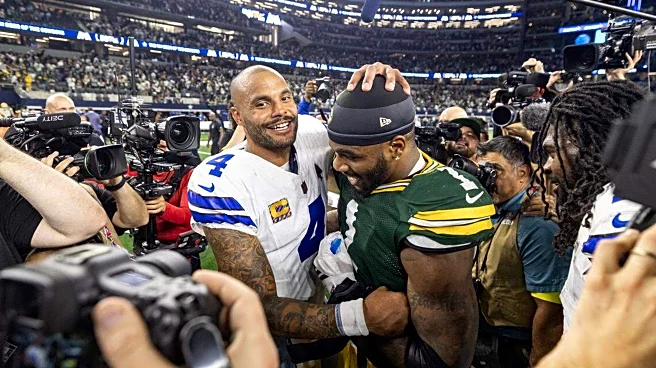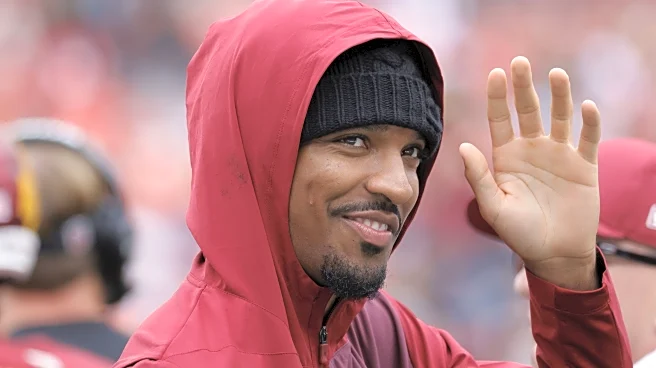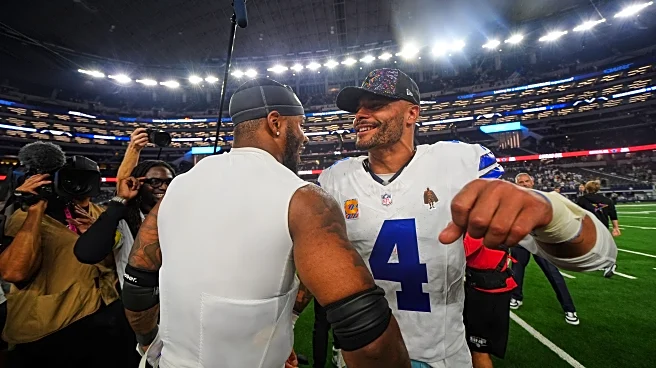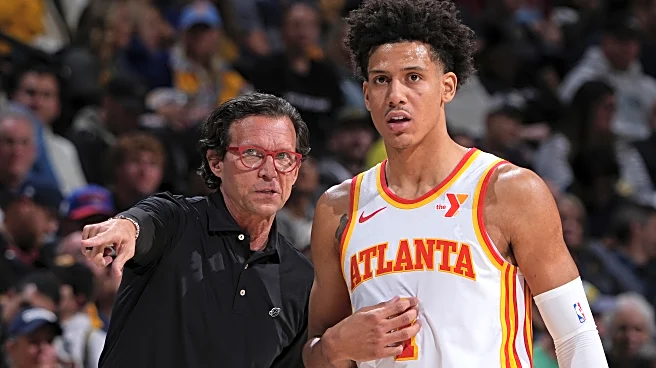The Dallas Cowboys went toe-to-toe with one of the top teams in the NFC, and almost got a win. Dak Prescott and the offense were able to put on an all-star performance without their top player, CeeDee Lamb. The outcome would have been different if the defense forced a turnover on downs on just one of the Green Bay Packers’ second-half possessions.
The return of Micah Parsons almost became a secondary storyline with both offenses moving the ball. Even though the narrative was shifting, that didn’t
lessen his impact on the field. Even though the game plan on offense was to avoid Parsons, he still finished with ten total pressures per Pro Football Focus, leading all defensive ends for Week 4.
Seeing Parsons in a Packers uniform and hearing him and Jerry Jones talk separately about their severed relationship at the end of the game was a reminder that there are still some hurt feelings on both sides about how things went down. Right before kickoff, NBC’s Cris Collinsworth talked about how he got the sense during the week that both sides never wanted this to happen, but you can’t change the past now.
All Parsons and the Cowboys can do now is move forward.
First point: Under pressure!
Through the first month of the season, Dak Prescott has been tasked with carrying the team on his back. He’s done everything possible to keep the Cowboys in position to win games and is playing at an MVP-level like he did in the back half of the 2023 season.
No one can use the narrative that he’s only successful on the field because of the offensive weapons, because CeeDee Lamb was missing from the lineup against the NFL’s top-scoring defense in Green Bay. Credit can be given to the offense he and Brian Schottenheimer have put in place to maximize his talents, and create balance with a strong running game to complement the passing attack.
Stats only tell part of the story, but looking at how Prescott has fared this season when facing pressure can help explain why he is playing at an All-Pro level right now. According to PFF’s metrics, Prescott has a 90.2 grade when facing pressure this season, which ranks first among all starting quarterbacks. The quarterback second on the list is Matthew Stafford, with a 73.8 grade under pressure. The gap between Prescott and Stafford’s grade is the same distance as Stafford to Michael Penix, 12th on the list.
No one else is coming close to how good he’s been when things start to collapse around him in the pocket. It’s difficult to say how long Prescott can keep this up, but if he can keep Dallas within a fighter’s chance of winning games, the Cowboys could be a fringe playoff team come December.
Second point: Nate Thomas’ development
Nate Thomas was slated to be the Week 1 starter in place of Tyler Guyton after the starting left tackle suffered a bad knee injury in training camp. Thomas took the majority of the starting reps after and in the preseason, and the front office and Schottenheimer praised his development and potential.
Then, when Week 1 rolled around, Guyton was able to make it back in time to face the Philadelphia Eagles, pushing Thomas back to the bench. He would sit there over the next few weeks, waiting for his opportunity to play while everyone else was getting a chance to, with injuries to Cooper Beebe and Tyler Booker. He got his chance on Sunday night against one of the league’s top pass-rushing duos and seemed to hold his own.
He started out rotating with Terence Steele at right tackle, but was forced to take over on the left side after Guyton went out of the game with a concussion. In those 17 reps on the left and right side, Thomas did not allow a quarterback pressure on 12 pass-block opportunities.
It was in limited reps, but that stat is an excellent sign for Thomas’ development and cementing himself as the team’s No. 1 swing tackle of the future. Schottenheimer has also shown he’s not afraid to shake things up, like taking Trevon Diggs out of the starting lineup on defense. If he feels like Thomas can be better than Steele or Guyton right now, there’s a chance he makes that move too.
Third point: Red zone in overtime
After Prescott connected with Jalen Tolbert in overtime for what should be the frontrunner for catch of the year, Dallas was set up with first and goal from about the five-yard line, with under seven minutes to go in the game. In much more difficult circumstances, the Cowboys’ offense scored a touchdown on its last three possessions. Scoring a touchdown here should have been a piece of cake.
After Schottenheimer called a timeout, giving his offense a breather and time to collect itself, the play call on first down was a run play to Javonte Williams that should have gone for a touchdown. That’s not how it went.
Hunter Luepke comes into motion and looks to be assigned to block No. 33 of the Packers. Instead, he hits tight end Brevyn Spann-Ford in the back, forcing him to lose his balance when blocking Rashan Gary, who is there to meet Williams in the hole for a one-yard gain.
It’s a big if, but if Luepke doesn’t cause friendly fire on Spann-Ford, Williams might be able to bounce the ball to the outside for a walk-in touchdown. Green Bay’s linebacker Quay Walker looked to be in a good position to stop Williams if that happened, but the Cowboys running back showed throughout the game that he deserved the benefit of the doubt to at least get it to the one-yard line.
Instead, the following two play calls are pass plays that end in a sack and an incompletion, forcing Dallas to kick a field goal and hope the defense could make a stop against Love and the Packers. If Dallas scores on their opening play in the red zone, it at least takes some of the pressure off the defense and takes a field goal for Green Bay out of the conversation. Maybe the outcome is different.
Fourth point: Houston, we have a solution
There’s no more hiding from the fact that James Houston needs more snaps on defense. He’s shown flashes since he arrived in training camp as one of the team’s better pass rushers. That’s something the Dallas defense could use a lot more of right now.
Houston’s strip sack of Jordan Love and fumble recovery gave Dallas the ball back with under 20 seconds to go before halftime, down 13-9. With all the momentum (yes, it’s a real thing) on the Cowboys’ side, on the very next play, Prescott hit George Pickens for a wide-open touchdown, and Dallas led 16-13. Houston’s fumble was a turning point for Dallas, which felt very much asleep for most of the first half.
Dallas could use game-changing plays from their defense, which sits near the bottom of the league with just two takeaways on the season. If Houston can be the spark that they need, not only with rushing the passer, but forcing a few more turnovers, there’s no reason he shouldn’t be in the starting lineup against the New York Jets.
Fifth point: New York state of mind
The 2025 Dallas Cowboys currently suffer from split personality disorder. On one side, they lead the NFL in total yards on offense; on the other, Dallas has given up the most total yardage on defense. If Prescott and the offense are expected to score a minimum of 30 points per game to get a win, it’s going to be a long season. That’s not a winning formula. Just ask the 2024 Cincinnati Bengals.
That’s why this weekend’s game against the New York Jets is vital for Dallas to walk away from MetLife Stadium with a win. In 2019, the Cowboys started the season 3-0 and lost the next two games before facing the Jets in Week 6. It was an ugly game that Dallas ultimately lost, and things began to look sideways.
The Cowboys can’t let this become another game like 2019. New York is certainly desperate at 0-4, but Dallas is the stronger team offensively and should score against a struggling defense. The Jets lead the league in missed tackles with 45 and allow 130.5 yards per game on the ground, the eighth worst in the NFL.
Led by Justin Fields, the Jets’ offense is having trouble finding a rhythm under their first-year offensive coordinator. Matt Eberflus spent two seasons with Fields in Chicago, so his familiarity should give Dallas an edge in their game plan for him and his mobility. Fields is second among quarterbacks with 178 rushing yards on the season, an area Dallas has historically struggled to defend. If the Cowboys want to be taken seriously and reach a .500 record again, they need to show they can beat weaker teams before the tough stretch of games that are ahead for the rest of the season.
